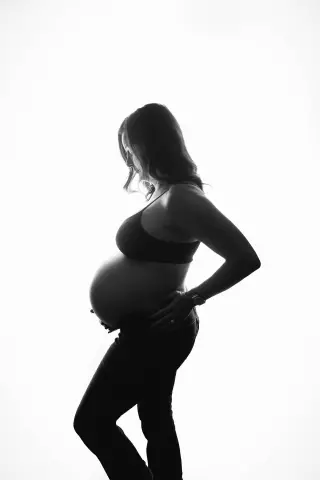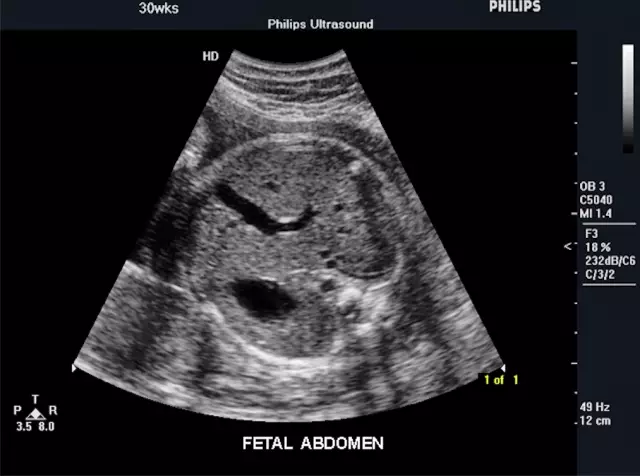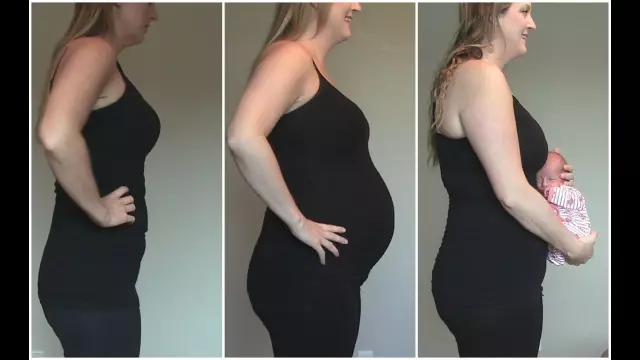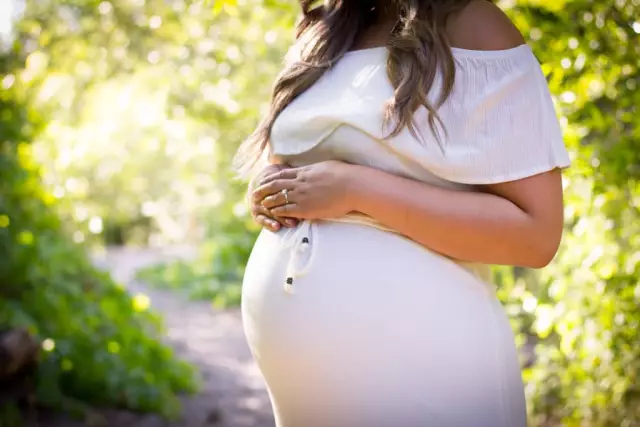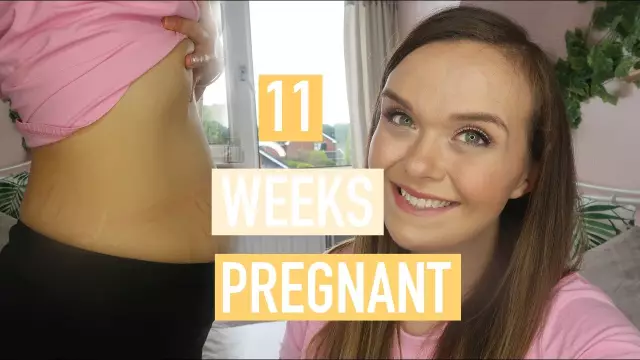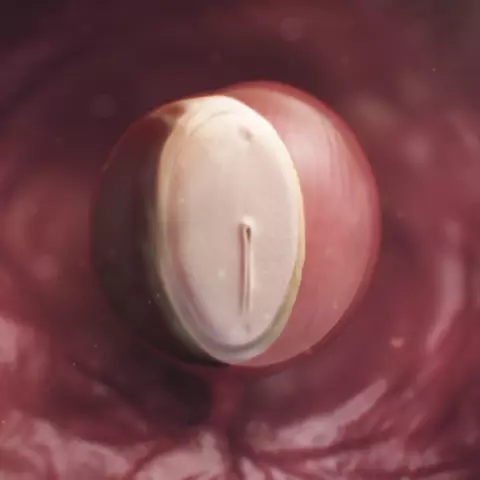- Author Rachel Wainwright [email protected].
- Public 2023-12-15 07:39.
- Last modified 2025-11-02 20:14.
36 weeks pregnant

At 36 weeks of pregnancy, 34 full weeks from the moment of conception of the child are marked, the ninth lunar month of pregnancy ends (in total, a full-term pregnancy lasts 10 lunar months, or 9 calendar months).
Changes in the fetus
At this time, the length from the crown to the heels, the baby reaches 45 - 46 cm, it weighs from 2400 to 2600 g. These parameters and normally may deviate slightly up or down. Now, outwardly, the fetus differs from a newborn child only in mass and growth data. The delay in fetal development is judged by ultrasound data at 36 weeks of gestation. According to the size of the abdomen at 36 weeks of gestation, it is not entirely correct to draw conclusions about this. If childbirth still occurs at 36 weeks of gestation, the baby will be considered premature.
All organs of the unborn child are formed, and now the brain centers of their regulation are being improved. In particular, the vascular and respiratory centers in the medulla oblongata are already ready to support the functioning of the fetus at 36 weeks of gestation at birth. The lungs of the future baby are also ready for this moment - they have formed a sufficient amount of alveoli and surfactant - a special substance that maintains them in a straightened state.
A fetus at 36 weeks gestation is in the uterus in a flexion position, which is also called embryonic. In this position, his arms and legs are bent and tightly pressed against the body, which allows the fetus at 36 weeks of gestation to occupy the minimum possible volume in the uterus, and at the same time continue to grow.
If you do an ultrasound scan at 36 weeks of gestation, you can see that the testicles in boys have already descended into the scrotum.
Changes in a woman's body at 36 weeks of gestation
The belly at 36 weeks of gestation continues to grow, its upper border is determined 26 cm above the level of the bosom, or 16 cm above the navel. The abdominal circumference at 36 weeks of gestation is approximately 96 - 98 cm. For these two parameters - the height of the uterus (in cm) and the abdominal circumference (in cm) - you can find out the estimated weight of the future newborn, for this you just need to multiply them. The resulting figures (weight in grams) will deviate from the child's true weight by no more than 100-200 g.
In the uterus, the volume of amniotic fluid has decreased by 1.5 times, now the fetus occupies its main volume. The placenta is beginning to age, although it is still doing its job of supporting the baby's life.

Even with good health and the absence of gestosis at 36 weeks, by the evening, the pregnant woman's legs swell. The reason for the phenomenon lies in the fact that the large uterus squeezes the blood vessels in the abdominal cavity, making it difficult for blood to flow from the legs to the heart. According to gravitational laws, the liquid begins to linger primarily on the feet. For the first time, a woman notices swelling on her feet not even by the imprints of an elastic band from socks on the skin, but by the feeling that the shoes have become tight. Such edema differs from pathological edema in that they occur only in the evening, and in the morning of the next day, not a trace remains of them.
An enlarged uterus can cause other problems with the well-being of a pregnant woman. So, pain at 36 weeks of pregnancy in the anal area of a woman can become the first symptom of exacerbated hemorrhoids. In the later stages of the development of this unpleasant disease, women may notice spotting at 36 weeks of gestation from the rectum, mainly after a bowel movement. After childbirth, over time, the manifestations of hemorrhoids will be smoothed out, and will no longer cause so much trouble.
A woman must, with the same attention, monitor the frequency of movements of her baby in the abdomen at 36 weeks of gestation, for 12 hours a total of at least 10 of them should be recorded. Rare movements are often an unfavorable sign, the fetus may suffer at this time. The movements of the unborn baby sometimes cause pain at 36 weeks of gestation in the area under the ribs, where the legs of the fetus are located when it is head down.
Examination at 36 weeks of gestation
If during the previous ultrasound examination it was revealed that the placenta is attached to the wall of the uterus too low, then an ultrasound scan at 36 weeks of gestation should clarify its location after a while. Over the past period, the uterus increased in size, and the placenta could "pull up" after it.
A woman comes to the doctor for examination at least 1 time a week, at the period of 36 weeks of pregnancy, fetal heartbeats are clearly heard through the anterior abdominal wall. If you need to clarify the well-being of the fetus, the doctor prescribes cardiotocography.
YouTube video related to the article:
Found a mistake in the text? Select it and press Ctrl + Enter.

